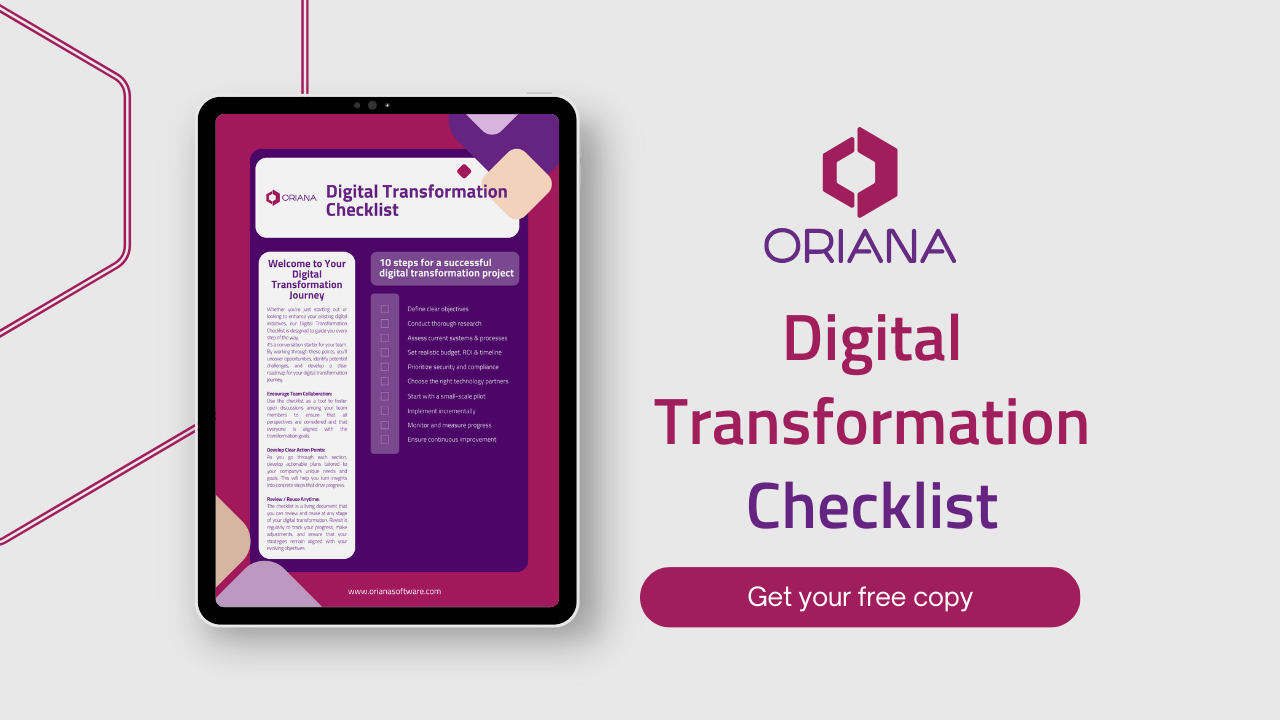Welcome to the second part of our summer blog series about sustainability in digital transformation! If you haven’t read the first part yet, be sure to check it out to learn how to define clear objectives, conduct thorough research, and assess your current systems and processes.
This month, we move forward in strategic planning for digital transformation, focusing on prioritizing security and compliance, selecting the right technology partners, starting with a small-scale pilot project, and the importance of incremental implementation. Let’s delve into why these steps are crucial and how to execute them successfully!
1. Prioritize Security and Compliance
In digital transformation, security and compliance are indispensable. Here’s why and how to prioritize them:
Why It’s Important:
- Data Protection: Protecting customer and business data is vital for maintaining trust. For example, in a banking application, it’s crucial to encrypt customer data.
- Regulatory Compliance: Adhering to legal requirements is essential to avoid fines and legal consequences. GDPR compliance, for instance, is fundamental when handling data of European customers.
- Reputation Protection: A data security incident can severely damage a business’s reputation. Think of the infamous data breaches involving Yahoo or Equifax.
Tips to Prioritize Security and Compliance:
- Regular Audits: Conduct regular security audits and risk assessments. Tools like Qualys or Nessus can assist with this.
- Training and Education: Provide regular training on data security and compliance for employees. Use e-Learning platforms such as Moodle or Pluralsight.
- Updates and Patches: Keep your systems updated with the latest security patches and updates. For instance, regular patch management is essential for Windows Server.
Methodologies:
- Security Frameworks: Implement well-known security frameworks like ISO 27001.
- Compliance Tools: Use compliance tools such as OneTrust or TrustArc to ensure continuous regulatory adherence.
2. The role of choosing the Right Technology Partners for achieving sustainability in digital transformation
Choosing the right technology partners is crucial for acheiving sustainability in digital transformation. Here’s how to make the best choice:
Why It’s Important:
- Expertise: The right partner can help you understand technological possibilities and apply best practices. Think of tech companies specialized in specific fields.
- Flexibility and Scalability: The right partner allows for the introduction of scalable and flexible solutions. Companies offering low-code/no-code technology can provide this flexibility in solution design.
- Support and Maintenance: Reliable support and maintenance are critical for long-term and sustainable success, ensuring continuous technical expertise and regular version updates.
Tips for Choosing the Right Technology Partner:
- Research and Recommendations: Ask for recommendations and research potential partners. Use reports from Gartner or Forrester as a starting point.
- Trial Period: If possible, start with a trial period to assess the partner’s capabilities. For example, SaaS providers often offer trial periods.
- Contract Terms: Carefully review contract terms, especially those related to support and services. For instance, thoroughly review the SLA (Service Level Agreement).
Methodologies:
- Competitive Bidding: Conduct a competitive bidding process to identify and select the right partner. Choose 4-5 providers and evaluate them through multiple rounds based on pre-defined criteria.
- Partner Evaluation: Create evaluation criteria to objectively qualify potential partners. Use an evaluation matrix considering costs, technical capabilities, and support services.
3. Start with a Small-Scale Pilot Project
Before fully committing to transformation, it’s wise to start with a small-scale pilot project. Here’s why and how to do it:
Why It’s Important:
- Risk Mitigation: A pilot project helps identify and minimize potential issues. For instance, if you plan to implement a new CRM system, it’s advisable to test it on a smaller group of customers first.
- Learning Opportunity: Provides an opportunity to learn and refine processes before a larger rollout. For example, test a new e-commerce platform with a specific product category first.
- Feedback Collection: Allows for collecting user feedback and making necessary adjustments. Piloting new internal communication tools can be useful for improving user experience.
Tips for a Pilot Project:
- Clear Objectives: Define clear goals and metrics for the pilot project. For example, increasing employee satisfaction can be a key goal for implementing a new HR system.
- Limited Scope: Keep the project size and scope manageable for quick and effective execution. For instance, introduce a new customer service software within one department first.
- User Involvement: Involve employees who work in the area to be digitized, as their feedback will be relevant and valuable. Conduct interviews or surveys using tools like Microsoft Forms or Google Forms.
Methodologies:
- Pilot Plan: Create a detailed pilot plan outlining goals, metrics, timeline, and resources. There are many product launch plans available online to help frame your project.
- Results Analysis: At the end of the pilot, analyze the results and use them to refine the full-scale implementation. Always refer to the foundational goals set at the project’s start for evaluation.
4. Implement Incrementally for sustainability in digital transformation
An incremental implementation approach can significantly enhance the success of digital transformation. Here’s why it’s important and how to do it effectively:
Why It’s Important:
- Manageable Changes: Incremental implementation makes it easier to manage and adapt to changes. Consider a phased implementation of a new ERP system, starting with basic functions or a specific module.
- Continuous Improvement: Allows for ongoing feedback and continuous improvement. In agile software development, adjustments are made based on feedback received at the end of each development cycle.
- Reduced Risk: Smaller, incremental changes reduce the risk of operational disruptions and failures. Cloud-based services minimize these risks with their gradual implementation plans.
Tips for Incremental Implementation:
- Phased Rollout: Whether your business is small, medium, or large, transformation doesn’t happen overnight. Break down the large project into smaller, more manageable phases.
- Feedback Loops: Establish continuous feedback loops to gather insights and make necessary adjustments. Use survey tools like free questionnaire apps for regular user feedback collection.
- Priority Order: Prioritize tasks and changes based on their impact and urgency. Create a priority matrix to identify the most pressing tasks in any given situation.
Methodologies:
- Agile Principles: Apply agile principles to facilitate incremental implementation, emphasizing iterative progress and regular feedback.
- Implementation Schedule: Develop a detailed implementation schedule outlining phases, goals, and deadlines. For example, create a rollout plan for a new marketing automation system.
- Monitoring and Adjustment: Regularly monitor project progress and be ready to make adjustments based on real-time data and feedback.
Security and Compliance are critical areas in digital transformation efforts, and a pilot project provides a methodology for gradual implementation. If your company lacks the competence or resources internally, don’t let that hold you back. The Oriana team offers support from the very first steps: we assess your organization and tailor the implementation methodology to fit your needs and project size. We believe in initiating small-scale pilot projects and providing expert support throughout the incremental implementation process. This way, you can be confident that every step of your digital transformation will be in professional hands with us.
Don’t miss our next article in August, where we’ll cover budgeting and ensuring long-term sustainability in digital transformation.
Want to move forward in digitalization?
Contact us for more information or personalized advice!




